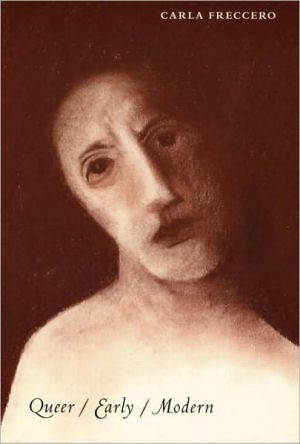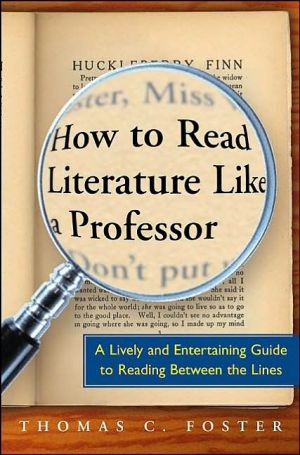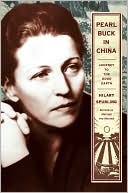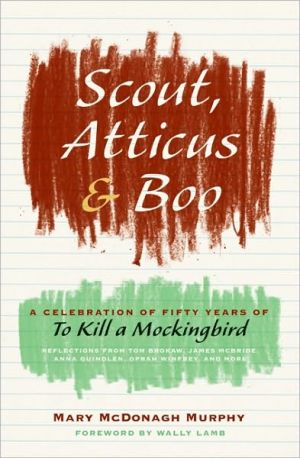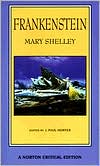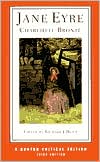Queer/Early/Modern
In Queer/Early/Modern, Carla Freccero, a leading scholar of early modern European studies, argues for a reading practice that accounts for the queerness of temporality, for the way past, present, and future time appear out of sequence and in dialogue in our thinking about history and texts. Freccero takes issue with New Historicist accounts of sexual identity that claim to respect historical proprieties and to derive identity categories from the past. She urges us to see how the...
Search in google:
Addresses theoretical and historical issues related to debates in queer theory and in early modern studies by reading early and late modern texts, archival materials, and contemporary popular works.
Queer/Early/Modern\ \ By CARLA FRECCERO \ Duke University Press\ Copyright © 2006 Duke University Press\ All right reserved. \ ISBN: 978-0-8223-3690-7 \ \ \ \ Chapter One\ Prolepses \ QUEER/EARLY/MODERN\ In "Psychoanalysis and Renaissance Culture"-an essay that for many exemplifies the uneasy relationship between new historicism and psychoanalysis-Stephen Greenblatt asks whether psychoanalysis is an appropriate interpretive technique for reading early modern textuality. The issue, for him, is that "the subject"-understood to be the focus of psychoanalytic inquiry-cannot be said to exist before the social order that produces it. In Greenblatt's view, early modern histories and political economies produce the modern psychological subject that, in psychoanalysis, is taken to be the cause of action. Psychoanalytic interpretation therefore performs a metalepsis on early modernity, belatedly attributing a cause (subjectivity) to what is, in fact, an effect (of culture).\ One equally materialist response to the observation that psychoanalysis seems causally belated with respect to early modernity has been to dispute, on historical grounds, a certain conception of the modern subject as the subject that serves as one of psychoanalysis's foundational categories. If early modern European textuality foregrounds the status of the subject as linguistically constructed, contingent, textual, and fragmented, then early modernsubjectivity has more in common with psychoanalytic and poststructuralist notions of the subject than it does with the modernity that appears in the intervening period of Western European philosophical and literary discourse. Jonathan Dollimore argues, in effect, that the notion of the constructed subject is precisely what poststructuralism and post-modernity have in common with early (pre-eighteenth-century) modernity:\ Of the few central beliefs uniting the various post-structuralisms (and connecting them with post/modernism) this is one of the most important: human identity is seen to be determined by, for example, the pre-existing structures of language and ideology, and by the material conditions of human existence. Thus is the subject decentred, and subjectivity revealed as a kind of subjection-not the antithesis of social process but its focus. In the early modern period also the individual was seen as constituted by and in relation to-even the effect of-a pre-existing order.\ Whether or not this can be said to be "actually" the case, it serves as a useful and productive heuristic device for a particular-and "queer" -reading of early modernity. Among other things, this conceptualization allows the suspension by the subject, and any particular instance of the subject, of a normative gender and its concomitant heteronormatively other-directed desiring orientation. Only a textual, nonunified, nonpsychologized subject could be said to allow for such a suspension, at least within a heteronormative and homophobic cultural context. (For the moment I bracket the question-fully and well explored by many historians of sexuality-of whether or not early modern Europe could be said to be such a culture.)\ Similar objections of belatedness could be leveled at queer theory. Queer theory seems, through its techniques of reading, to deploy categorical and psychoanalytically inflected notions of sexuality and normativity that European pre- and early modernity would produce only later, and its theoretical provenance lies firmly within the late twentieth century. Indeed, the reversal signified by the rhetorical term metalepsis could be seen to embody the spirit of queer analysis in its willful perversion of notions of temporal propriety and the reproductive order of things. To read metaleptically, then, would be to engage in queer theorizing.\ Queer/Early/Modern combines the psychoanalytic and poststructuralist dimensions of queer theory in its thinking through the problems of time and rhetorical subjectivity. In referring to the playful and relatively unused opposite of metalepsis, prolepsis, I want to hesitate about the question of temporal propriety in relations among early modernity, queer theory, and subjectivity. On the one hand, I embrace the accusation of metalepsis (with a twist) by pointing to the ways early modern textuality is a product of a kind of queer theorizing. On the other hand, as many current productions of Shakespeare plays demonstrate and as many Shakespearean scholars-some of whom were also early modern studies' first queer theorists-have argued, early modern European textuality proleptically anticipates queer theory and queers modernity. This gesture-turning belatedness into avant la lettre-is a kind of historical corrective, but it does not necessarily take seriously the pieties of the discipline that would require the solemn, even dour, marshalling of empirical evidence to prove its point. To the extent, then, that this work queers historicist imperatives, it does so by means of an implicit critique of historicism itself.\ The prolepses of this chapter title also refers to the designation as "early modern" of the period of Western modernity formerly known as the Renaissance. That expression suggests that "early on," in other words "before" the modern, there was an instantiation of the modern, and so the early modern comes proleptically to figure modernity (in an examination that is, however, always retroactive). The debate about the "early modern" designation as opposed to the designation "Renaissance" has been tackled at length and for a long time, but I bring it up here to highlight precisely those (ideologically marked and thus significant, for modernity) ways in which the period has stood in for the beginning of modernity, its anticipation, its seeds, so to speak, because those are also what are to be read in the tracing of a queerness that is projected backward to the period and forward from it. I therefore take advantage of the prolepses of the period designation even as I remain agnostic about its temporal referential value.\ The slashes between queer, early, and modern in this book's title, inarticulable though they may be, are intended to interrupt the current notion of the Renaissance as the early modern period and to force a pause on what it means to say that something is historically early in our genealogies of Western modernity, as well as to focus in on what is meant by modern, and how that term signifies when used in the context of discussions of textuality, subjectivity, and sexuality. The slashes also point to my recognition that in many ways to use the term queer and to speak of a prolepsis of queer in early modernity is to engage in a willfully modern act, one that would be called perversely anachronistic by some Renaissance scholars, some of whom were my teachers and whose ranks have sometimes included myself.\ Finally, the slash between early and modern also allows me to admit considerable uncertainty about the question of whether what I do in reading queer "back then" has anything to do with "back then" or not. In other words, such reading may finally be a matter of the "mere" juxtaposition of early and modern. While this sort of critical and analytical juxtaposition could be considered historically illegitimate-and thus also illegitimate in relation to the techniques and theories of historicist literary critical practice in which I was trained-it is a familiar and valid logic in other kinds of analytical practices, especially those, such as psychoanalysis, that attend to the particularity of the articulating subject and the rhetorical effects of language: association, for example, along with others such as condensation, displacement, metaphor, metonymy, repetition, and allegory.\ Psychoanalysis, as an analytic, is also a historical method, albeit one denigrated by disciplinarily historicist practices. On the one hand, it argues for an eccentric relation between events and their effects; on the other, it often challenges the empiricism of what qualifies as an event itself. Psychoanalysis affords the possibility of producing a fantasmatic historiography that acknowledges what Karl Marx, Louis Althusser, and Slavoj Zizek observe to be the mode through which subjects live not only their histories, but "history" itself, to the extent that history is lived as and through fantasy in the form of ideology.\ In a sense, then, I am also reading "against" history, for the reading I do here at times works counter to the imperative-appearing in many discourses called literary as well as those called historical-to respect the directional flow of temporality, the notion that time is composed of contiguous and interrelated joined segments that are also sequential. This does not, nevertheless, mean that the work is anti- or ahistorical. Here I side with Jonathan Goldberg's comment about the interpretive horizons or limits on reading that apply to two logics, textuality and historicity, which are, for him, one and the same: "The logic of textuality that is the logic of historicity means also that the virtually unbounded possibilities of difference are relatively bound within any textual/historic instance." Furthermore, it would be nearly impossible for a Renaissance scholar to read "without history." But I do argue for the possibility that reading historically may mean reading against what is conventionally referred to as history. Not only do I make use of intertextuality, a mode of figural intra- and intertemporal articulation that might be called "literary" rather than historical, but I also invoke identification and one of its common effects, anachronism, as two intimately related and hallowed temporal processes that make up-like and along with desire-queer time. These analyses proceed otherwise than according to a presumed logic of cause and effect, anticipation and result; and otherwise than according to a presumed logic of the "done-ness" of the past, since queer time is haunted by the persistence of affect and ethical imperatives in and across time.\ The queer of this collection of critical interventions is difficult to define in advance. Over the past decade and a half, this term, as taken up by political movements and by the academy, has undergone myriad transformations and has been the object of heated definitional as well as political debates. Each chapter here seeks to redefine it or to exploit its relative undefinability, its strategic usefulness as a term that in many situations can be said to elude definition. It is a term that, here, does have something to do with a critique of literary critical and historical presumptions of sexual and gender (hetero)normativity, in cultural contexts and in textual subjectivities. It also has something to do with the sexual identities and positionalities, as well as the subjectivities, that have come to be called lesbian, gay, and transgender, but also perverse and narcissistic-that is, queer. At times, queer continues to exploit its productive indeterminacy as a word used to designate that which is odd, strange, aslant; in this respect, I will argue that all textuality, when subjected to close reading, can be said to be queer. Ultimately, if this book can be said to have a position on queer, it would be to urge resistance to its hypostatization, reification into nominal status as designating an entity, an identity, a thing, and to allow it to continue its outlaw work as a verb and sometimes an adjective.\ Each chapter in this book addresses theoretical and historical issues related to debates in queer theory and in early modern studies; each also juxtaposes readings of "early" and "late" modern texts, sometimes canonically literary, as in chapters 2, 3, and 4, where I discuss lyric poetry and short narrative fiction, sometimes "archival," as in the discussion of the PACS (Pacte Civil de Solidarité) legislation in France, the collection of discourses that together form the text of the "Brandon Teena" case, and Jean de Léry's sixteenth-century ethnography of the Tupinamba in Brazil. The status of these texts as canonical or popular cuts across their generic designations, so that, for example, the lyric is not confined to a high Western literary legacy but includes the popular lyric of rock and roll, and the mundanity of the travel narrative is in some respects elevated to the status of the literary or poetic. Each of these texts is enlisted to articulate a theoretical problem posed by current critical debates in queer theory, feminism, the history of sexuality, history, and early modern studies. The first part of the book-Past, Present-takes a critical approach to a series of problems or issues in feminism and in sexuality studies; it proceeds in the mode of critique by examining the work of others against textual readings and a variety of theoretical concerns in order to deconstruct and reinscribe various histories and problematics. In other words, it performs the work of negativity.\ Chapter 2, "Always Already Queer (French) Theory," introduces the problematic of queer as deployed in institutional and critical contexts by examining a recent response to the term's use by Donald Morton. Morton criticizes the rise of the queer as an avoidance of materialism that is part and parcel of the "linguistic turn" of poststructuralist theory. I take up the accusation of "immateriality" in relation to the queer, explore the legacy of French and French-influenced poststructuralist linguistic, philosophical, and literary theory in the definition and practice of queer theory, and argue that the indeterminacy of the queer-an indeterminacy eroded from both the right and the left-may in fact constitute its usefulness as a deconstructive anti-identitarian critical and political practice. I return to a moment in feminist academic debates around deconstruction that focused on institutionalization as a way to understand and interrogate the drive to consolidate and institutionalize queer studies. Thus the always already invoked in the chapter title refers not only to the way queer theory functions as a deconstructive practice in relation to heteronormativity but also to the way the contours of the debates around queer assume the form of a certain earlier feminist problematic as well.\ I then turn to the lyric as the paradigmatic instance of the explicit construction of a presumptively heterosexual desiring subject that turns out to be strangely queer and ask what it might tell us about romantic love and its institutionalization as discourse in Western modernity. This, too, is an example of how the always already queer subject inhabits heteronormative and masculinist culture from within, even as late modern instances of the lyric-in this chapter, the songs of Melissa Etheridge-bring this deconstructive insight to the fore through disassembling subject-object relations founded on sexual and gender difference.\ Chapter 3, "Undoing the Histories of Homosexuality," looks at the "acts versus identities" debate seen to stem from a passage in Michel Foucault's History of Sexuality for the way that it has been adopted or refuted in relation to the historical question of early modern sexual identities. Through a close examination of two essays by the principal U.S. explicator of Foucault for the history of (homo)sexuality, David Halperin, I revisit the narratives of the history of sexuality for the way "modern" homosexual identity and "premodern" sodomitic acts depend on the tacit assumption first that the identity under construction is gendered and, second, that it is culturally generalizable or universalizable in modernity. Thus, for example, I ask the question of what would obtain in the examination of acts and identities in the premodern era if the category of gender were included alongside sexuality, why a universal model of modern homosexuality might be problematic, and what these two questions might have to do with each other.\ (Continues...)\ \ \ \ \ Excerpted from Queer/Early/Modern by CARLA FRECCERO Copyright © 2006 by Duke University Press. Excerpted by permission.\ All rights reserved. No part of this excerpt may be reproduced or reprinted without permission in writing from the publisher.\ Excerpts are provided by Dial-A-Book Inc. solely for the personal use of visitors to this web site. \ \
1Prolepses : queer/early/modern12Always already queer (French) theory133Undoing the histories of homosexuality314Queer nation : early/modern France515Queer spectrality69
\ From the Publisher“Carla Freccero’s beautifully written book offers a strong, persuasive, and new way of reading queer early modern texts. Refusing the historicist view that would draw fierce lines between premodern and modern, Freccero asks her reader to consider premodern texts as intervening in the logic of their times and persisting within modernity in spectral form. Her intense engagement with queer early modern scholarship is enriched and disoriented by her insistence that contemporary practices of ‘queering’ are haunted by their unfinished and unfinishable past. Her singular and deft way of moving between contemporary culture and politics and the animated remnants of premodern texts offers a brilliant model for contemporary scholarship and a truly innovative turn in queer studies.”—Judith Butler, Maxine Elliot Professor at the University of California, Berkeley\ “Had he lived in the sixteenth century, André Breton would have proclaimed: ‘Art will be queer or it will not be.’ Such is the enduring truth we obtain from Carla Freccero’s powerful, inventive, indeed genial readings of the early modern canon. A brilliant work showing us what we can do with what we call the past.”—Tom Conley, author of The Self-Made Map: Cartographic Writing in Early Modern France\ \ \
